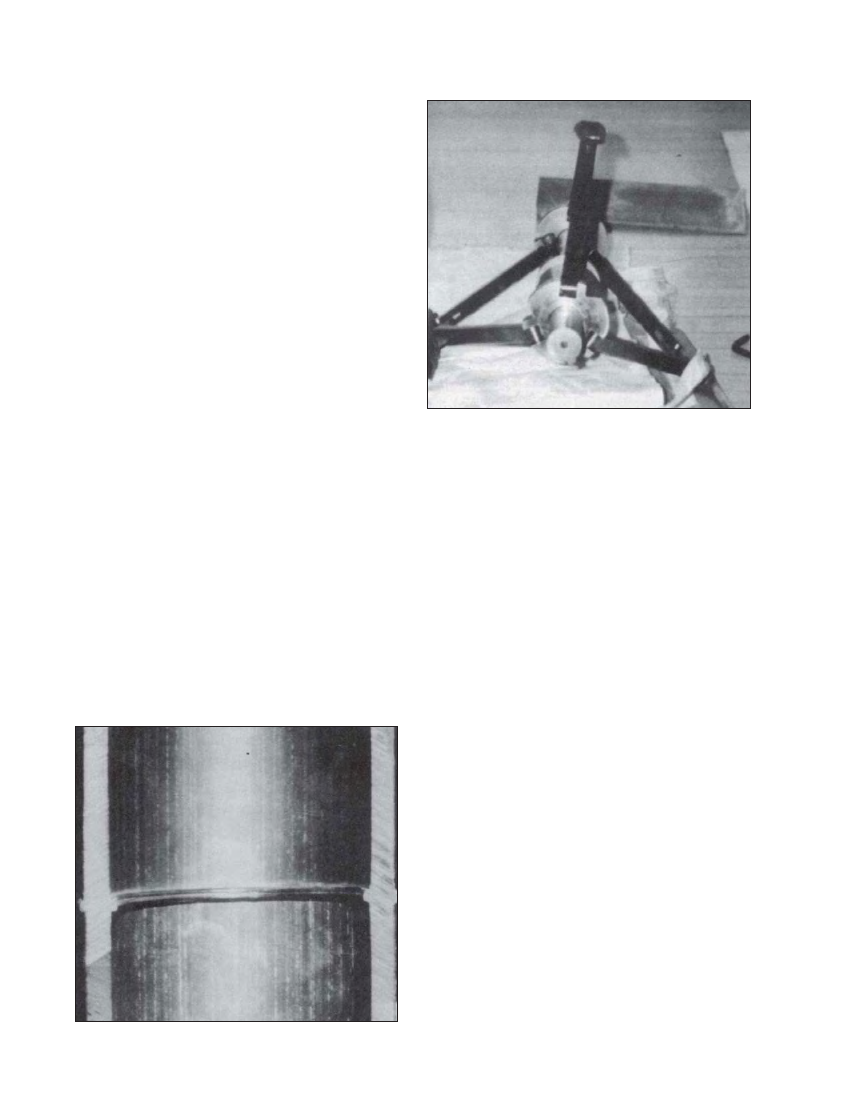
136 CIVIL WORKS GUIDELINES FOR MICRO-HYDROPOWER IN NEPAL
The design flow of this micro-hydro scheme is 401/s and the
intake is shown in Photograph 10.1.
Over a six month period, the performance of the screen has
shown the following characteristics:
Around 90% of sediment between 0.5 mm and 1 mm
diameter was excluded.
Some build up of algae was noted, but this did not inhibit
flow during the trial period.
The effect on performance due to ice was not noticeable,
even at temperatures 12°C below freezing point.
Tests are required over a longer period to check for corrosion
of the screens and effect of continued algae growth, particularly
in warmer temperatures.
More information on Coanda screens can be obtained
from:
DULAS Limited,
Machynlleth, Powys SY20 8SX, Wales, UK
Fax: +44(0)1654781390
e-mail: dulas@gn.apc.org
A pilot project in Nepal, a Coanda screen has been retrofitted
in an existing micro hydropower plant with joint efforts by
Small Hydropower Promotion Project (SHPP/GTZ), Energy
Systems and Rural Energy Development Program (REDP) of
United Nation Development Program (see Photograph 10.3).
Dulas Engineering provided the Coanda Screen at free of cost
for this pilot project.
A 16 kW Cha Khola micro-hydropower plant at Singe VDC,
Kavrepalanchowk district, Nepal was identified to be suitable
for retrofitting the Coanda screen. It was agreed that the ideal
location to retrofit a Coanda screen would be at the forebay of
this micro-hydropower plant. Major specifications of the Cha
Photo 10.2 Weld beads on HDPE surface
Photo10.3 De-beader tool
Khola micro hydropower plant are as follows:
Design Flow: 50 l/s
Gross Head: 55 m
Installed Capacity: 16 kW
Turbine: 3-jets Pelton
Beneficiaries: 125 Households
Screen commissioning
During commissioning in January 2004, the screen operation
was observed until a steady condition was reached. Once,
steady state was reached, the turbine nozzles were closed to
observe the overflow/spilling mechanism from the screen.
Some leaves, stems and twigs were introduced into the flow
to observe the self-cleaning mechanism of the screen. Also, a
handful of sand particles were placed at the weir crest of the
screen during the steady state flow condition to visually observe
the sediment exclusion effects.
The findings during the commissioning phase were as
follows:
i. When leaves, stems and twigs were introduced with the
flow, they initially blocked part of the screen openings.
However, the entire diverted discharge was able to pass
through the screen even when the flow was partially
obstructed. When the turbine valves were closed, the water
flowing through the screen pushed the leaves out (of the
screen), demonstrating the self-cleaning mechanism.
ii. Although it was not possible to visually quantify the
sediment volume that passed over the screen when such
sediments were introduced at the weir section, the larger
once could be seen rolling down the screen.
iii. The discharge entering into the screen passed through
the first 250 mm to 300 mm length (the screen length
is about 645 mm).